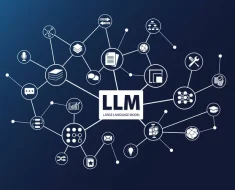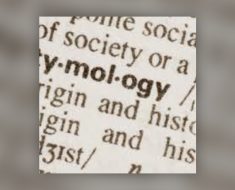Introduction
Since ChatGPT launched in September 2022, have you noticed how many new large language models (LLMs) have been released?
It’s hard to keep count, right?
That’s because there’s a big rush in the tech world to create better and smarter models. It can be tricky to keep track of all these new releases, but it’s important to know about the top and most exciting LLMs out there. That’s where this article comes in handy. We’ve put together a list of the standout LLMs based on the LMSYS leaderboard. This leaderboard ranks models based on how well they perform.
If you’re curious about how these models get ranked, check out another article that explains all about the LMSYS leaderboard.

1. GPT-4 Turbo
GPT-4-Turbo is an advanced version of earlier models like GPT-3 and GPT-4, designed to be faster and smarter without increasing its size. It’s part of OpenAI’s series of models that includes earlier versions like GPT-2 and GPT-3, each improving upon the last.
- Organization: OpenAI
- Knowledge Cutoff: December 2023
- License: Proprietary (owned by OpenAI)
- How to access ChatGPT-4-Turbo: The version of GPT-4 Turbo featuring vision capabilities through JSON mode is accessible to ChatGPT Plus subscribers for $20 per month. Users can update to ChatGPT-4 Turbo through Microsoft’s Copilot, choosing creative or precise mode.
- Parameters Trained: The exact number isn’t shared publicly, but it’s estimated to be similar to GPT-4, around 175 billion parameters. The focus is on making the model more efficient and faster rather than increasing its size.
Key Features
- Faster and more efficient: It works quicker and more efficiently than previous models like GPT-3 and GPT-4.
- Better at understanding context: It is better able to grasp the context of discussions and can generate more nuanced text.
- Versatile in tasks: Whether it’s writing text or answering questions, this model is capable of handling various tasks effectively.
- Focus on safety and ethics: Continues OpenAI’s commitment to safe and ethical AI development.
- Learns from users: It improves by learning from how people use it and adapting over time to improve responses.
2. Claude 3 Opus
Claude 3 Opus is the latest iteration of Anthropic’s Claude series of language models, which includes earlier versions like Claude and Claude 2. Each successive version incorporates natural language processing, reasoning, and safety advancements to deliver more capable and reliable AI assistants.
Anthropic has also developed specialized language models, such as Haiku and Sonnet. Haiku is a compact and efficient model designed for specific tasks and resource-constrained environments, while Sonnet focuses on creative language generation and collaboration with human writers.
- Organization: Anthropic
- Knowledge Cutoff: August 2023
- License: Proprietary
- How to access Claude 3 Opus: Talk to Claude 3 Opus here for $20/month. Developers can access Claude 3 Opus by paying a subscription to Anthropic’s API and integrating the model into their applications.
- Parameters Trained: Anthropic has not publicly disclosed the exact number of parameters. However, experts believe it to be within the same range as other large language models, likely exceeding 100 billion parameters.
Key Features
- Enhanced reasoning capabilities: Claude 3 Opus demonstrates improved logical reasoning, problem-solving, and critical thinking skills compared to its predecessors.
- Multilingual support: The model can understand and generate text in multiple languages, making it suitable for a global user base.
- Improved contextual understanding: It exhibits a deeper grasp of context, nuance, and ambiguity in language, leading to more coherent and relevant responses.
- Emphasis on safety and ethics: Anthropic has implemented advanced safety measures and ethical training to mitigate potential misuse and harmful outputs.
- Customizable behavior: Users can finetune the model’s behavior and output style to suit their specific needs and preferences.
3. Gemini 1.5 Pro API-0409-Preview
Google AI’s Gemini 1.5 Pro is a groundbreaking AI technology, capable of processing diverse data types like text, code, images, and audio/video. Its enhanced reasoning, contextual understanding, and efficiency ensure faster processing, lower computational resource requirements, and safety and ethical considerations.
- Organization: Google AI
- Knowledge Cutoff: November 2023
- License: While the specific license details for Gemini 1.5 Pro are not publicly available, it’s likely under a proprietary license owned by Google.
- How to Use Gemini 1.5 Pro: Gemini 1.5 Pro is still under development; however, you can still use it under preview mode on Google AI Lab. (Login via your personal email ID as you might need admin access if you’re using your work email)
- Parameters Trained: Gemini 1.5 Pro’s parameters are expected to be significantly larger than previous models like LaMDA and PaLM, potentially exceeding the trillion parameter mark.
Key Features (Based on available information and speculation)
- Multi-Modality: Gemini 1.5 Pro is anticipated to be multimodal, capable of processing and generating various types of data like text, code, images, and audio/video, enabling a wider range of applications.
- Enhanced Reasoning and Problem-Solving: Google’s Gemini 1.5 Pro, built on previous models like PaLM 2, is expected to display advanced reasoning, problem-solving capabilities, and informative answers to open-ended questions.
- Improved Contextual Understanding: Gemini is expected to have a deeper understanding of context within conversations and tasks. This would lead to more relevant and coherent responses and the ability to maintain context over longer interactions.
- Efficiency and Scalability: Google AI has been focusing on improving the efficiency and scalability of its models. Gemini 1.5 Pro is likely to be optimized for faster processing and lower computational resource requirements, making it more practical for real-world applications.
4. Llama 3 70b Instruct
Meta AI’s LLaMA 3 70B is a versatile conversational AI model with natural-sounding conversations, efficient inference, and compatibility across devices. It offers flexibility for specific tasks and domains, and encourages community involvement for continuous development in natural language processing.
- Organization: Meta AI
- Knowledge Cutoff: December 2023
- License: Open-source
- How to access LLaMA 3 70B: The model is available for free use and can be accessed through the Meta AI’s GitHub repository. Users can download the model and use it for various NLP tasks. You can chat with this model through Meta AI, but it’s not available in all the countries right now.
- Parameters Trained: 70 billion parameters
Key Features
- LLaMA 3 70B is designed for conversational AI and can engage in natural-sounding conversations.
- It generates more accurate and informative responses compared to earlier models.
- The model is optimized for efficient inference, making it suitable for deployment on a wide range of devices.
- LLaMA 3 70B can be finetuned for specific tasks and domains, allowing for customization to suit various use cases.
- The model is open-sourced, enabling the community to contribute to its development and improvement.
5. Command R+
Command R+ is an advanced AI model with 20 billion parameters, capable of handling tasks like text generation and explanations. It evolves with user interactions, aligns with safety standards, and integrates seamlessly into applications.
- Organization: Cohere
- Knowledge Cutoff: May 2024
- License: Proprietary
- How to access Command R+: Command R+ is accessible through Cohere’s API and enterprise solutions, offering a range of plan options to suit different user needs, including a free tier for developers and students. It can also be integrated into various applications and platforms. Chat with Command R+ here.
- Parameters Trained: Estimated 20 billion
Key Features
- Command R+ delivers fast response times and efficient memory usage, ensuring quick and reliable interactions.
- This model excels at deep comprehension, grasping complex contexts, and generating sophisticated responses.
- Capable of handling a diverse range of tasks from generating text and answering questions to providing in-depth explanations and insights.
- Maintains Cohere’s commitment to developing AI that aligns with ethical guidelines and adheres to strict safety standards.
- Adaptable and evolving, Command R+ learns from user interactions and feedback, continually refining its responses over time.
- Designed for seamless integration into applications and platforms, enabling a wide range of use cases.
6. Mistral-Large-2402
Mistral Large introduces a flagship model alongside Mistral Small, a version optimized for lower latency and cost. Together, they enhance Mistral AI’s product offerings, providing robust solutions across various performance and cost considerations.
- Organization: Mistral AI
- License: Proprietary
- Parameters Trained: Not specified
- How to access Mistral Large?
- Available through Azure AI Studio and Azure Machine Learning, offering a seamless user experience.
- Accessible via La Plateforme, hosted on Mistral’s European infrastructure for developing applications and services.
- Self-deployment options allow integration in private environments and are suitable for sensitive use cases. Contact Mistral AI for more details.
Key Features
- Multilingual Proficiency: Fluent in English, French, Spanish, German, and Italian with deep grammatical and cultural understanding.
- Extended Context Window: Features a 32K token context window for precise information recall from extensive documents.
- Instruction Following: Allows developers to create specific moderation policies and application functionalities.
- Function Calling: Supports advanced function calling capabilities, enhancing tech stack modernization and application development.
- Performance: Highly competitive on benchmarks like MMLU, HellaSwag, and TriviaQA, showing superior reasoning and knowledge processing abilities.
- Partnership with Microsoft: Integration with Microsoft Azure to enhance accessibility and user experience.
7. Reka-Core
Reka AI has introduced a series of powerful multimodal language models Reka Core, Flash, and Edge, trained from scratch by Reka AI itself. All these models are able to process and reason with text, images, video, and audio.
- Organization: Reka AI
- Knowledge Cutoff: 2023
- License: Proprietary
- How to access Reka Flash: Reka Playground
- Parameters Trained: Not specified, but > 21 billion
Key Features
- Multimodal (image and video) understanding. Core is not just a frontier large language model. It has powerful contextualized understanding of images, videos, and audio and is one of only two commercially available comprehensive multimodal solutions.
- 128K context window. Core is capable of ingesting and precisely and accurately recalling much more information.
- Reasoning. Core has superb reasoning abilities (including language and math), making it suitable for complex tasks that require sophisticated analysis.
- Coding and agentic workflow. Core is a top-tier code generator. Its coding ability, when combined with other capabilities, can empower agentic workflows.
- Multilingual. The core underwent pretraining on textual data from 32 languages. It is fluent in English as well as several Asian and European languages.
- Deployment Flexibility. Core, like our other models, is available via API, on-premises, or on-device to satisfy the deployment constraints of our customers and partners.
8. Qwen1.5-110B-Chat
The Qwen1.5-110B, the largest model in its series with over 100 billion parameters, showcases competitive performance, surpassing the recently released SOTA model Llama-3-70B and significantly outperforming its 72B predecessor. This highlights the potential for further performance improvements through continued model size scaling
Key Features
- Multilingual support: Qwen1.5 supports multiple languages, including English, Chinese, French, Japanese, and Arabic.
- Benchmark model quality: Qwen1.5-110B performs is at least competitive with Llama-3-70B-Instruct on chat evaluations like MT-Bench and AlpacaEval2.0
- Collaboration and Framework Support: Collaborations with frameworks like vLLM, SGLang, AutoAWQ, AutoGPTQ, Axolotl, LLaMA-Factory, and llama.cpp facilitates deployment, quantization, finetuning, and local LLM inference.
- Performance Enhancements: Qwen1.5 boosts performance by aligning closely with human preferences. It offers models supporting a context length of up to 32768 tokens and enhances performance in language understanding, coding, reasoning, and multilingual tasks.
- Integration with External Systems: Qwen1.5 exhibits proficiency in integrating external knowledge and tools, employing techniques such as Retrieval-Augmented Generation (RAG) to address typical LLM challenges.
9. Zephyr-ORPO-141b-A35b-v0.1
The Zephyr model represents a cutting-edge advancement in AI language models designed to serve as helpful assistants. This latest iteration, a finetuned version of Mistral, leverages the innovative ORPO algorithm for training. Its performance in various benchmarks is in itself an effective showcase of its capabilities.
- Organization: Collaborative between Argilla, KAIST, Hugging Face
- License: Open Source
- Parameters Trained: 141 Billion
- How to access: The model can be directly interacted with on Hugging Face. And since it is part of Hugging Face, you can also use it directly from the Transformer library.
Top Key Features:
- A Fine Tuned model: Zephyr is a finetuned iteration of Mistral model, utilizing the innovative alignment algorithm Odds Ratio Preference Optimization (ORPO) for training.
- Strong performance: The model exhibits robust performance on various chat benchmarks like MT Bench and IFEval.
- Collaborative training:
Argilla, KAIST, and Hugging Face collaboratively trained the model. It was trained on synthetic, high-quality, multi-turn preferences provided by Argilla.
10. Starling-LM-7B-beta
The Starling-LM model, along with the open-sourced dataset and reward model used to train it, aims to enhance understanding of RLHF mechanisms and contribute to AI safety research.
- Organization: Nexusflow
- License: Open Source
- Parameters Trained: 7 billion
- How to access: Access the model directly with the Hugging Face Transformers library.
Key Features
Conclusion
But that’s not all. There are other amazing models out there like Grok, Wizard LM, Palm 2-L, Falcon, and Phi3, each bringing something special to the table. This list comes from the LMSYS leaderboard and includes different LLMs from various organizations that are doing amazing things in the field of generative AI. Everyone is really pushing the limits to create new and exciting technology.
I’ll keep updating this list because we’re just seeing the beginning. There are surely more incredible advancements on the way.
I’d love to hear from you in the comments—do you have a favorite LLM or LLM family you like best? Why do you like them? Let’s talk about the exciting world of AI models and what makes them so cool!





